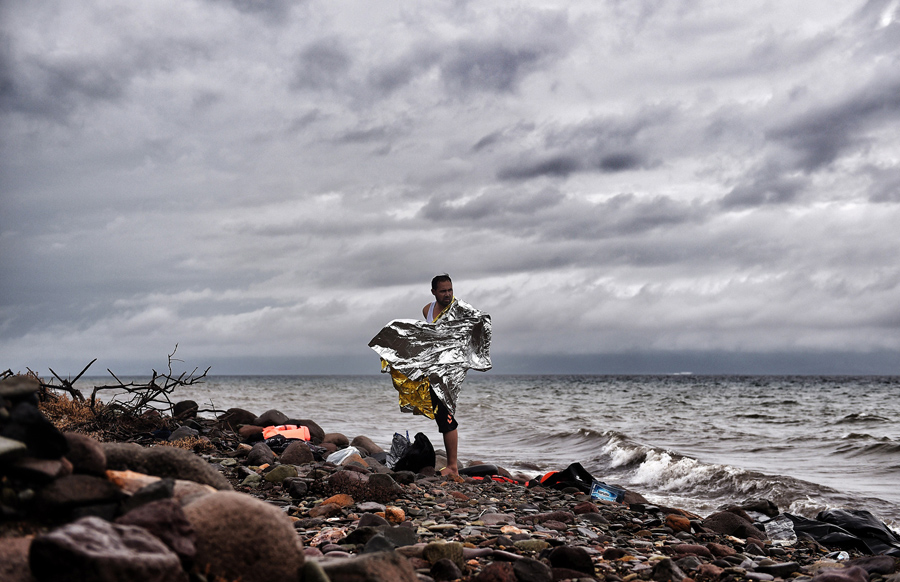Wrong title, right? This strangely beautiful photograph is about the European refugee crisis; it is not about the contemporary media environment. True enough, but I’m asking it to do double duty.
After being in dry dock for five months, this blog is heading back to sea. The down time was used to finish our next book manuscript, and now The Public Image is in production at the University of Chicago Press. NCN started in the immediate aftermath of our last publication with the Press, and it has lead to another volume that we never anticipated writing at all. The book will be out in October 2016, and in the interim we will be posting here periodically. A redesign of the main page also is in the works, but as always speed will not be our strong suit.
We have noticed that photojournalism got along just fine during our absence. Good thing, too. We continue to be gratified at how journalism endures despite the wrenching technological and financial changes that are redefining the industry. This sustainability doesn’t happen by accident, and it requires everything from difficult business decisions to the personal obsessiveness of individual reporters and photographers. John and I are not part of that mix; we have another job to do.
This blog is provided to encourage the engaged spectatorship that is needed to make the most of photojournalism as it is an important public art for a democratic society. We focus on the individual image, despite the social fact that the audience is awash in a deluge of images cascading across multiple media and platforms. We emphasize the close relationship between aesthetics and politics, and not to warn against enthrallment but rather to understand what is being revealed about the world. We offer interpretations of specific images not to say they are better than others, but to suggest how every good image is inviting us into a liminal space between virtual and material worlds, involving past, present, and future realities, and offering important choices about how to live with others.
And so we get back to the photograph above. He, too, stands in a liminal space: between land and sea, the Middle East and Europe, life and death. His world is at once harsh and beautiful. Harsh because he can’t survive on either the cold sea or the hard shore, and the litter from previous refugees is a reminder that, although alone, he is part of a vast multitude that is severely straining the organizational and political capacity of the EU. He can expect only a hard road ahead, one where he may become even more vulnerable, more hungry, colder, and having bleaker prospects that he has at the moment.
For all that, however, he stands within a world of profound natural beauty. More important still, he adds to that beauty. His metallic blanket captures the silver tints in the sea and sky, and the flair of the blanket, now like a tunic made sea foam, evokes a long lineage of paintings and mythic figuration going back to Greek antiquity. Just as Athena, sea nymphs, a multitude of other figures, and before all of that our species came from the sea, once again something unexpected and uncannily human stands on the beach, standing between two worlds and sure to change this one.
And so the two strands come together. Whether any single viewer is there or not, photojournalism continues to provide a constant stream of images. Those images are the difference between living in a public world or being relegated to private spaces more or less subject to state control. Whether we look or not, the photographs are there, like a refugee wrapped in wind torn silver vulnerability at the water’s edge. Each image like each migrant is one of a multitude, but still one. Waiting for someone to say, “Here, come this way, we can find a place for you. Come to think of it, we might need to hear what you have to say.”
Photography by Aris Messinis/AFP/Getty Images.

A very warm welcome back!